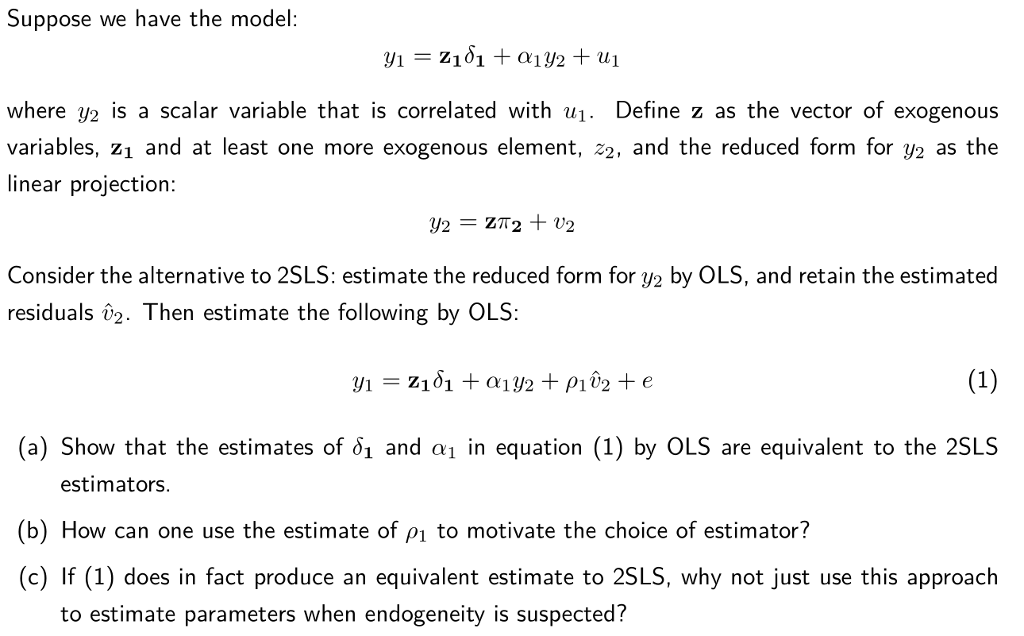Question
Suppose we have the model: y1 = z1*1 + 1*y2 + u1 where y2 is a scalar variable that is correlated with u1 . Define
Suppose we have the model: y1 = z1*1 + 1*y2 + u1 where y2 is a scalar variable that is correlated with u1 . Define z as the vector of exogenous variables, z1 and at least one more exogenous element, z2 , and the reduced form for y2 as the linear projection: y2 = z*2 + v2 Consider the alternative to 2SLS: estimate the reduced form for y2 by OLS, and retain the estimated residuals v'2. Then estimate the following by OLS: y1 = z1*1 + 1*y2 + 1*v'2 + e - Eq (1) (a) Show that the estimates of 1 and 1 in equation (1) by OLS are equivalent to the 2SLS estimators. (b) How can one use the estimate of 1 to motivate the choice of estimator? (c) If (1) does in fact produce an equivalent estimate to 2SLS, why not just use this approach to estimate parameters when endogeneity is suspected?

Step by Step Solution
There are 3 Steps involved in it
Step: 1

Get Instant Access to Expert-Tailored Solutions
See step-by-step solutions with expert insights and AI powered tools for academic success
Step: 2

Step: 3

Ace Your Homework with AI
Get the answers you need in no time with our AI-driven, step-by-step assistance
Get Started


